Two tropical fruits known for their great taste, juiciness, and health benefits, But are they even from the same family? Mango vs papaya – let’s break it all down!
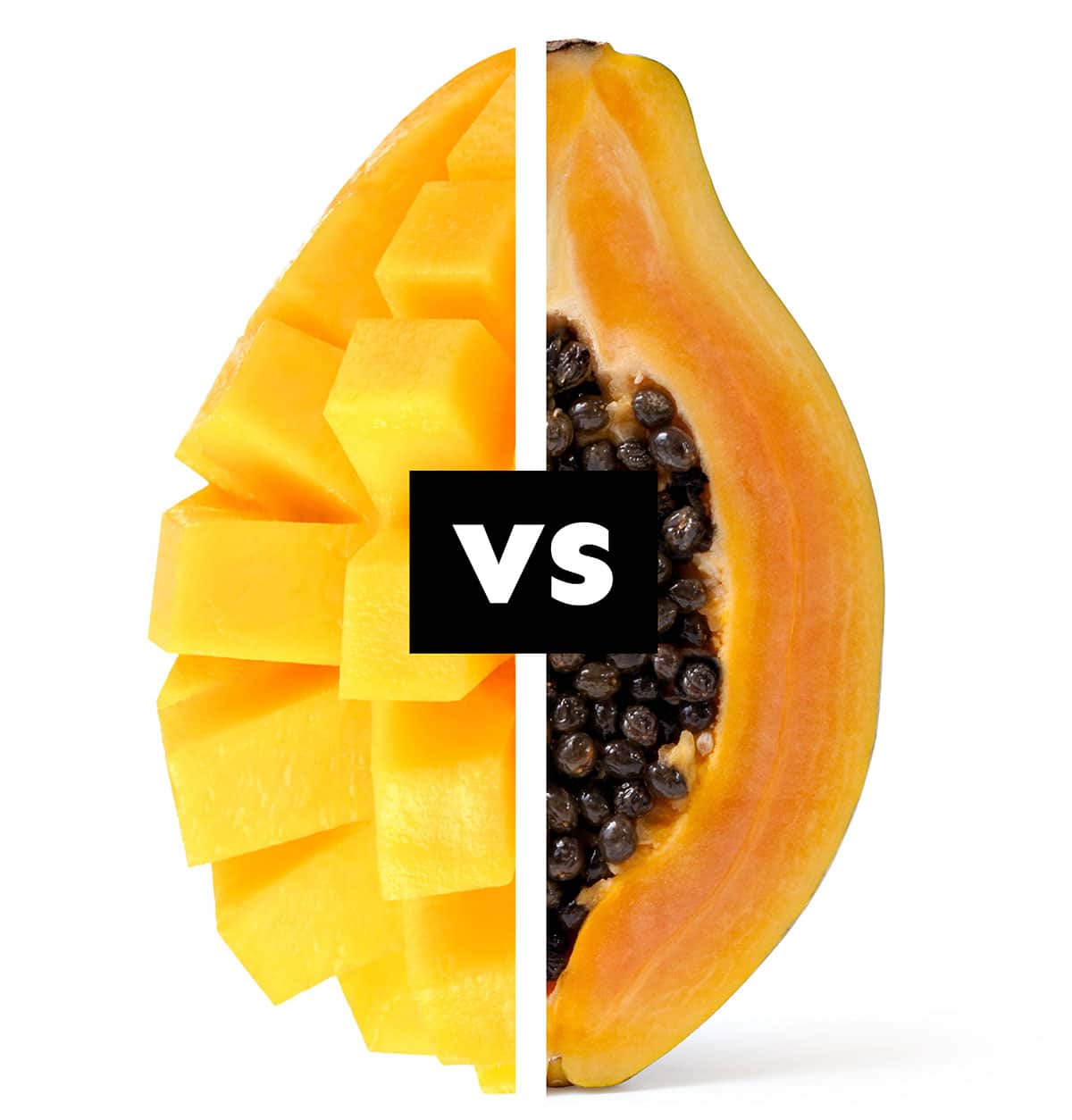
Mango and Papaya: What’s The Difference?
Are mangoes and papaya different varieties of the same plant? Surprisingly, no not at all. They are actually from totally different families. At first glance, mangoes and papayas look a lot alike, but actually they’re not even in the same family.
Mangoes grow on a tree that is a member of the Anacardiaceae family which is also called the cashew family. Other “family” members include cashew, pistachio, sumac, poison ivy, and poison oak. It is sort of the Adam’s Family of fruits, nuts, and itchy things.
Papayas are of the Caricaceae family which includes Pawpaws, Achene, and Jacaranda. Most people haven’t heard of all these, but you can reference our 129 Tropical Fruits Guide for a whole lot more on tropical fruits.
Origins
Mangoes are native to Southern Asia, but they made their way across the tropics and into America around 1880. Mangoes are now among the most commonly eaten fruits in the world with over 40 million metric tons grown commercially every year. India is the leading producer, but not a big exporter as they eat most of what they grow. Hey, India has 1.4 billion people who know a good thing. Grab our guide to buying and storing mango here!
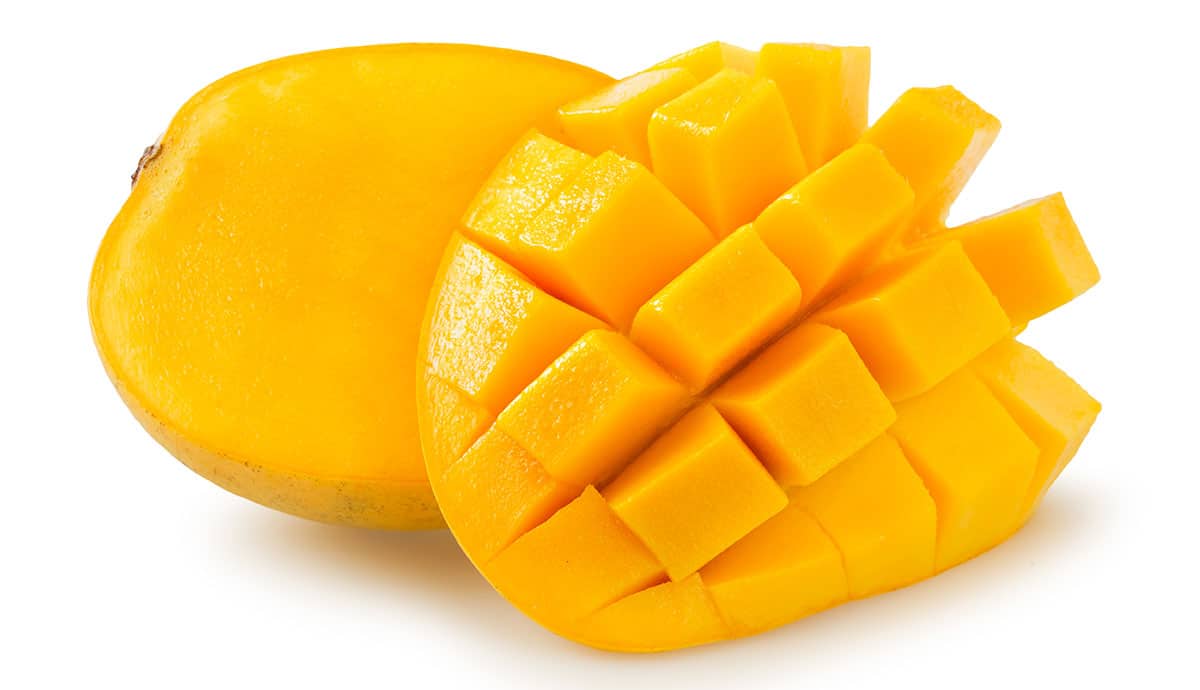
Papayas originated in Central America thousands of years ago, but like mangoes, were too good to stay put. They were introduced to Florida around 300 CE moving with native tribes. Spanish explorers brought them back to Europe in the 16th Century, and today they are grown in tropical regions worldwide to include Africa, Australia, Hawaii, and India who is the world’s leading grower of this tasty fruit.
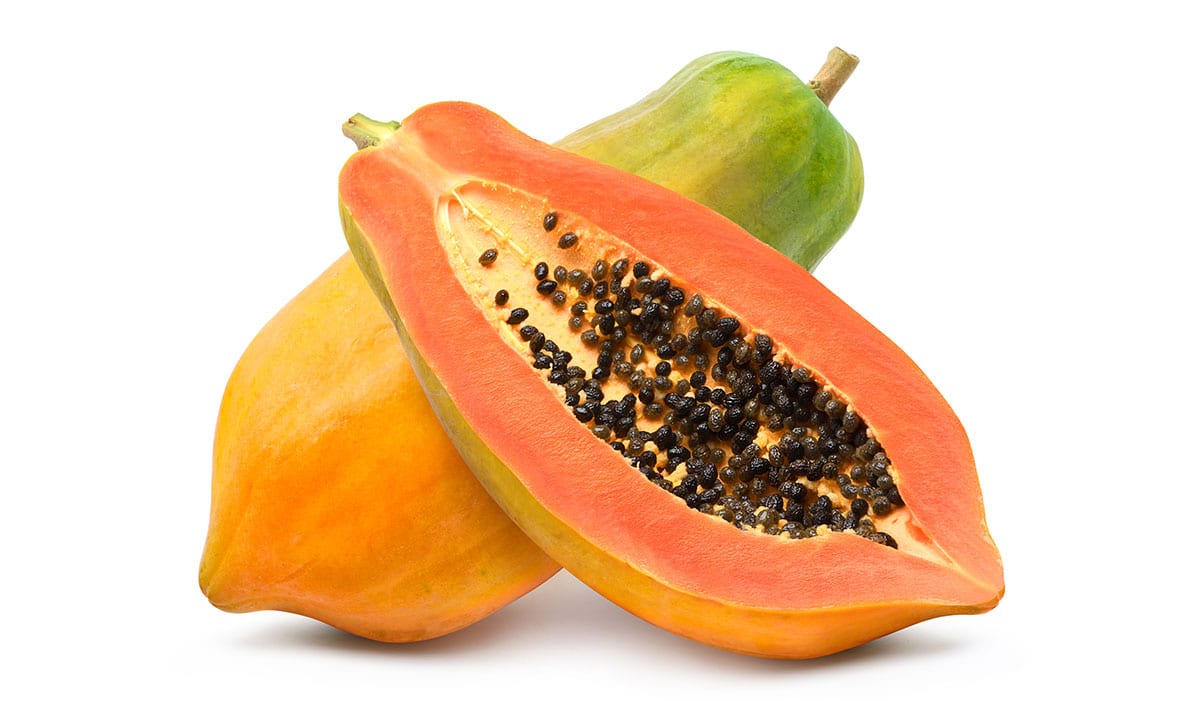
Appearance
Mangoes are generally smaller than papayas and have a distinctive oval or oblong shape. They are typically about 5 to 15 centimeters in length (2-6 inches), and 4 to 10 centimeters (1.5-4 inches) in diameter, depending on the variety. The skin of a mango is typically smooth and thin, and it can range in color from green to yellow to orange depending on the level of ripeness. The flesh inside a mango is usually a deep orange-yellow color. Mangoes are a stone fruit with a single large flat seed in the center of the fruit.
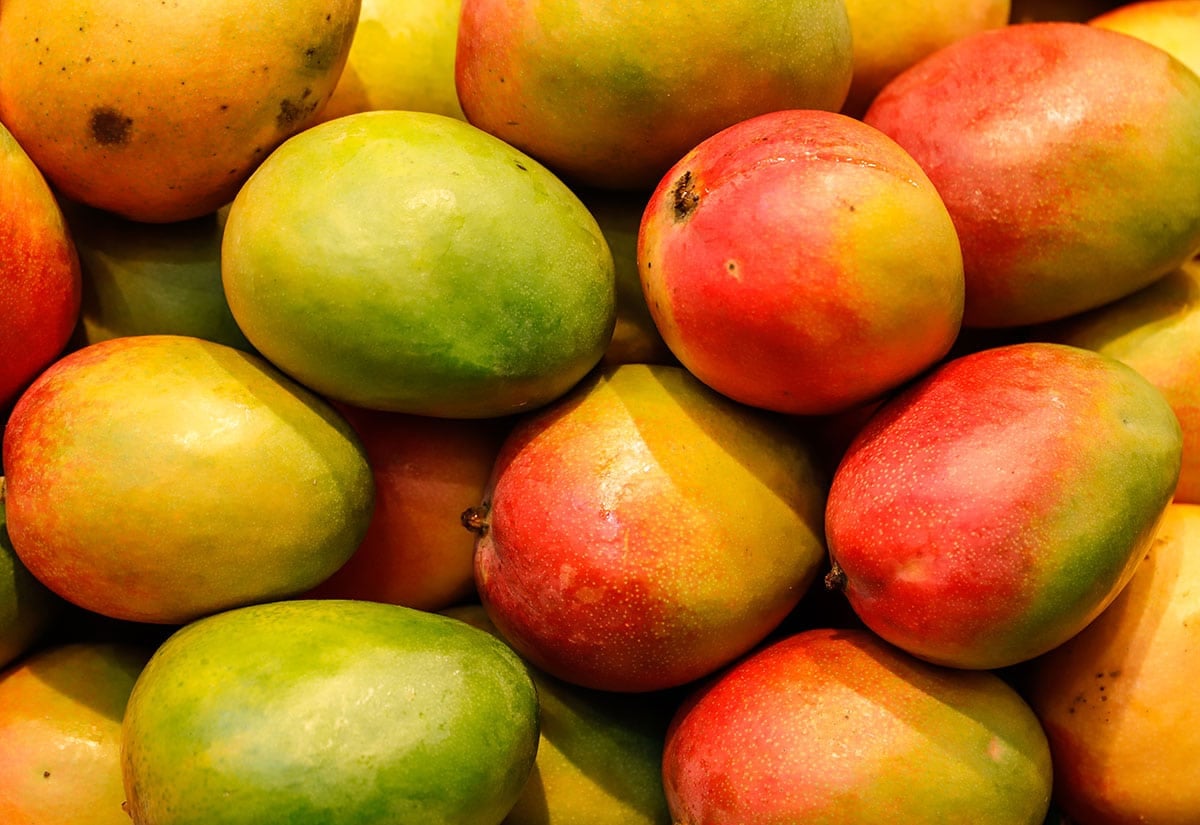
Papayas are typically larger than mangoes and have a distinct pear-like shape. They are usually about 10 to 20 centimeters in length (4-8 inches) and 5 to 10 centimeters (2-4 inches) in diameter. The skin of a papaya is typically thin and smooth, and it can range in color from green to yellow to orange, depending on the level of ripeness. The flesh inside a papaya is usually a deep orange color, and the seeds of a papaya are small, black, and are located in a central cavity in the fruit.
Another notable difference between mangoes and papayas is the texture of their skin. Mangoes have a slightly waxy skin that can be easily peeled off with a knife or vegetable peeler, while papayas have a softer, thinner skin that can be peeled off with a simple swipe of a knife or by hand.
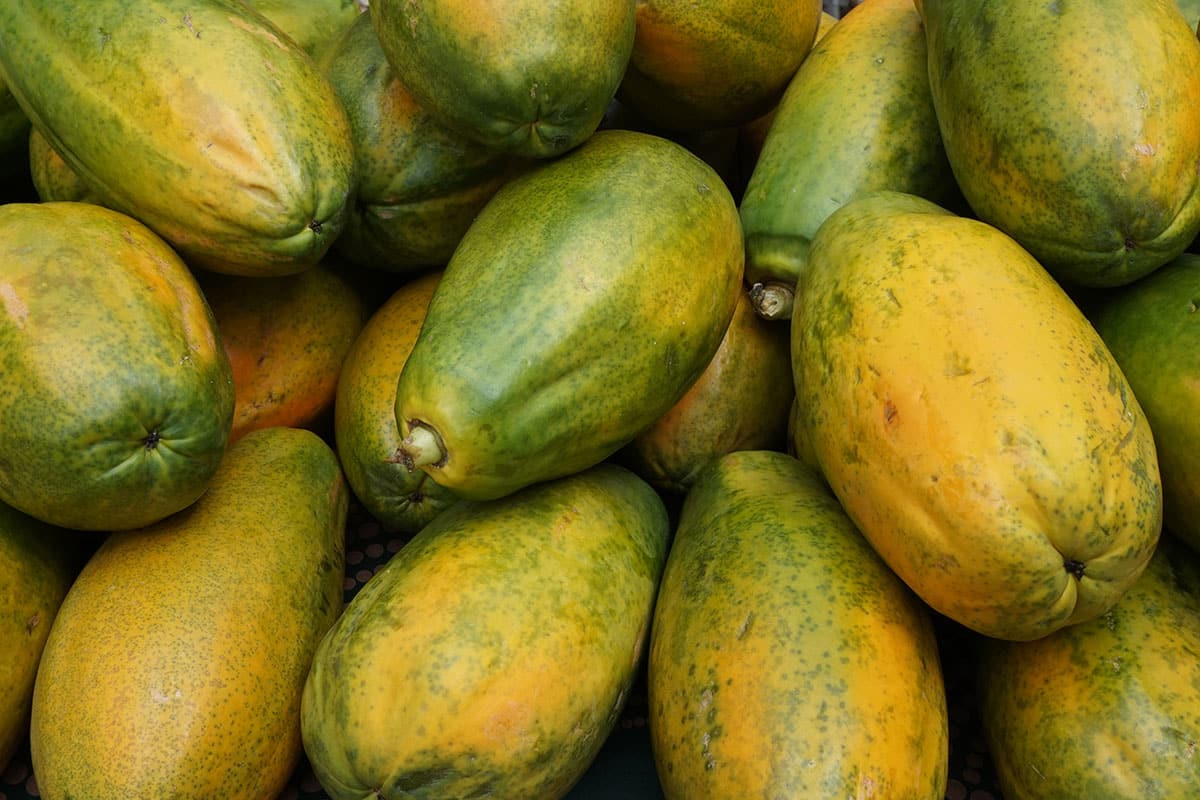
Smell
The aroma of a mango is arguably one of its most distinctive features. Ripe mangoes have a sweet and floral scent that can be quite strong with a hint of tartness. The aroma of a mango is often described as being similar to that of a peach or apricot with a tropical twist. The scent of a mango is particularly strong when the fruit is fully ripe and ready to eat.
In contrast, the aroma of a papaya is much more subtle than that of a mango. Papayas have a soft and sweet scent, similar to that of melons, with a slight hint of muskiness. The scent of a papaya is not as strong as that of a mango, but it is still noticeable and pleasant.
Taste
When it comes to taste, mangoes and papayas have distinct differences.
Mangoes have a sweet and tangy taste that can be quite intense. The flavor of a ripe mango is often described as being rich and juicy, with a balance of sweetness and acidity. The flesh of a mango is also lightly fibrous, which adds a unique texture to the fruit.
Papayas have a milder flavor compared to mangoes. The taste of a ripe papaya is sweet and slightly musky, with a creamy texture. The flesh of a papaya is soft and smooth, which makes it easy to eat and digest.
Mango vs. Papaya Acidity
Another important difference between mangoes and papayas is their acidity. Mangoes are slightly more acidic than papayas, which contributes to their tangy taste. Papayas, on the other hand, are known for their alkaline properties, which can help soothe the stomach and aid digestion. For those concerned about fruit acidity The pH of mangoes is between 3.4 – 4.8. The pH of papayas ranges between 5.5 – 5.9. Papayas are definitely an alkaline fruit.
Nutrition
Mangoes and Papayas are fairly similar nutritionally as both are vitamin dense, but also contain quite a bit of sugar.
Mango Nutrition Info: According to the USDA, a 1 cup serving (about 6 ounces) of raw mango contains:
- 99 Calories
- 25g of Carbohydrates
- 2g of Fiber
- 23g of Sugar
- 1.4g of Protein
- 66% of the RDA of Vitamin C
- 11% of the RDA of Vitamin A
- 11% of the RDA of Folate
Papaya Nutrition Info: Papayas are very similar to mango. The USDA data shows 1 cup (about 5 ounces) provides:
- 62 Calories
- 16g of Carbohydrates
- 2.5g of Fiber
- 11g of Sugar
- .7g of Protein
- 100% of the RDA of Vitamin C
- 9% of the RDA of Vitamin A
- 12% of the RDA of Folate.
Is Papaya Keto Friendly? No. Like mangoes, papaya do not fit well into a keto or other low carb diet.
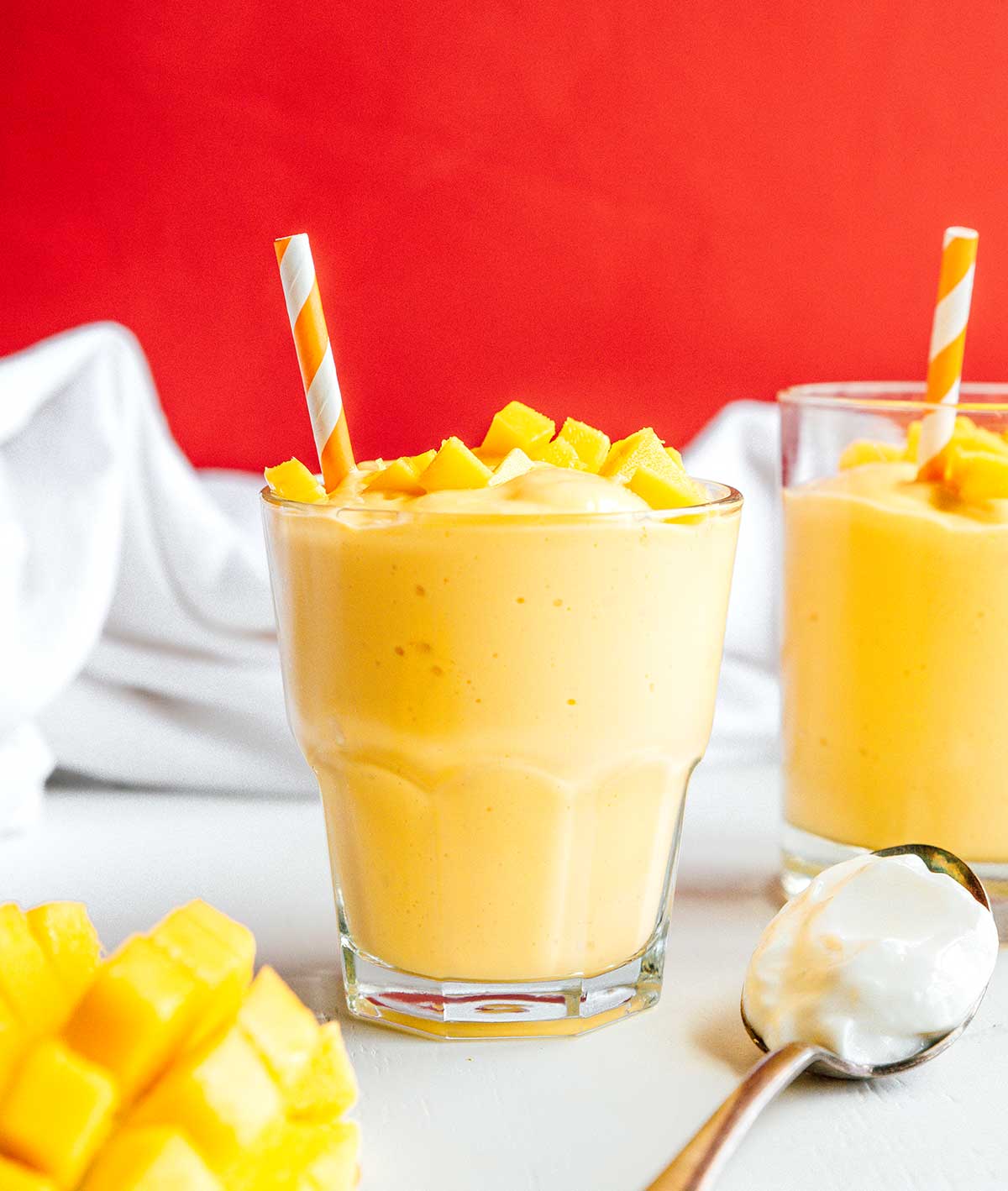
Uses
Mangoes are widely used in both sweet and savory dishes. In many tropical countries mangoes are a staple ingredient in mango salads, mango chutney, mango salsa, and sauces. The sweet and tangy flavor of mangoes pairs well with spicy dishes, and the fruit’s texture adds a unique element to many savory dishes. Mangoes are also a popular ingredient in mango smoothies, desserts, and baked goods, such as mango sorbet, mango cheesecake, mango bread, and always popular with the kids a refreshing mango pop mango popsicles.
Papayas are also a versatile fruit in the kitchen. The soft and sweet flesh of papayas makes them an excellent addition to smoothies and desserts, such as papaya sorbet, papaya mousse, and papaya pie. In savory dishes, papayas are often used in salads, salsas, and curries. The sweet and slightly musky flavor of papayas pairs well with spicy ingredients such as chili peppers and ginger.
Both mangoes and papayas are also commonly used in juices and smoothies. Mango and papaya smoothies are particularly popular in tropical countries, and they are often combined with other fruits, such as bananas, pineapples, and coconuts.
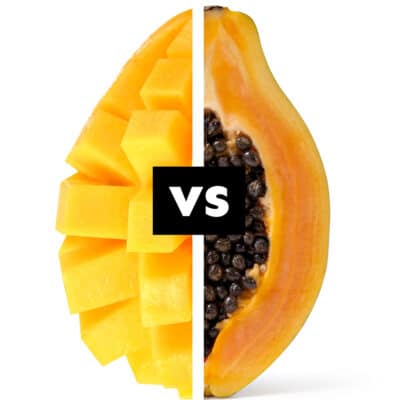
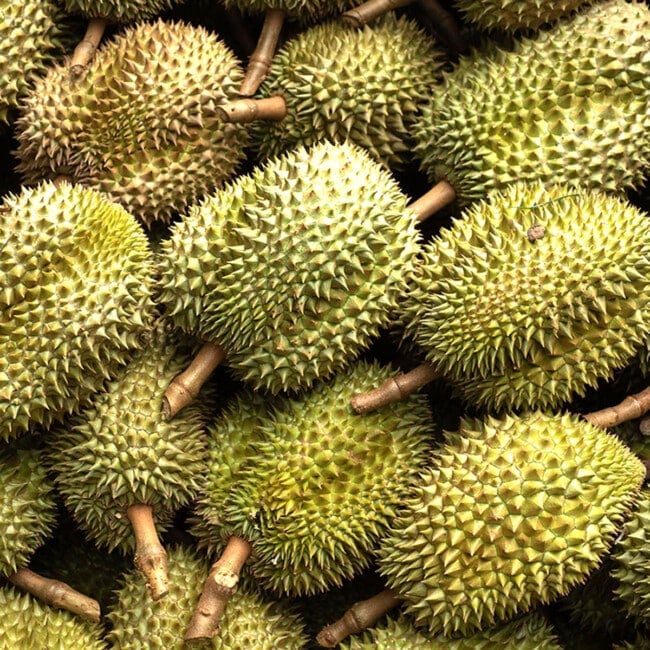
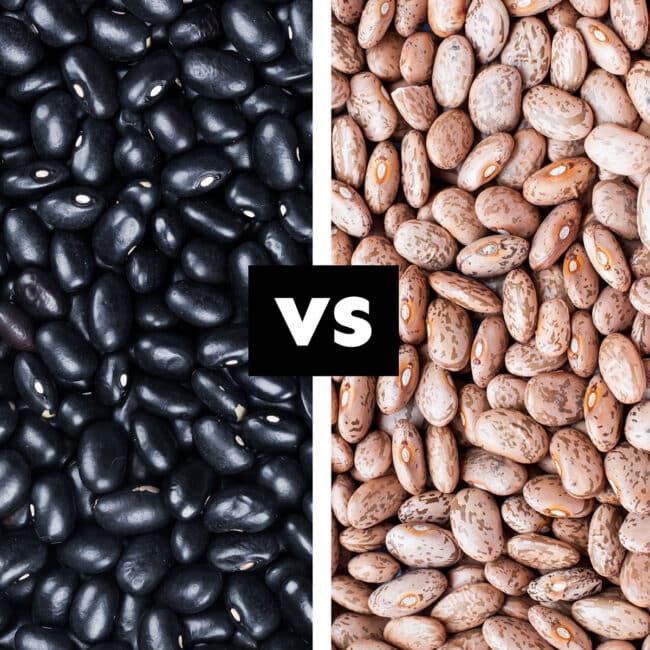
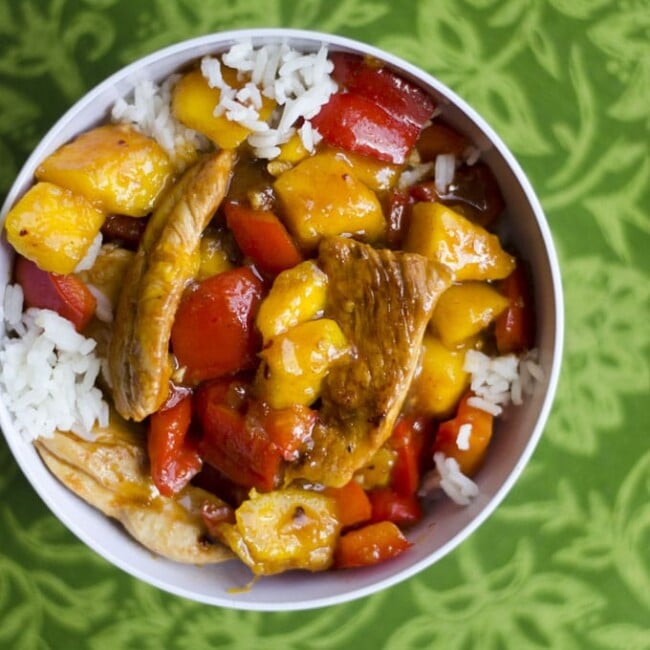
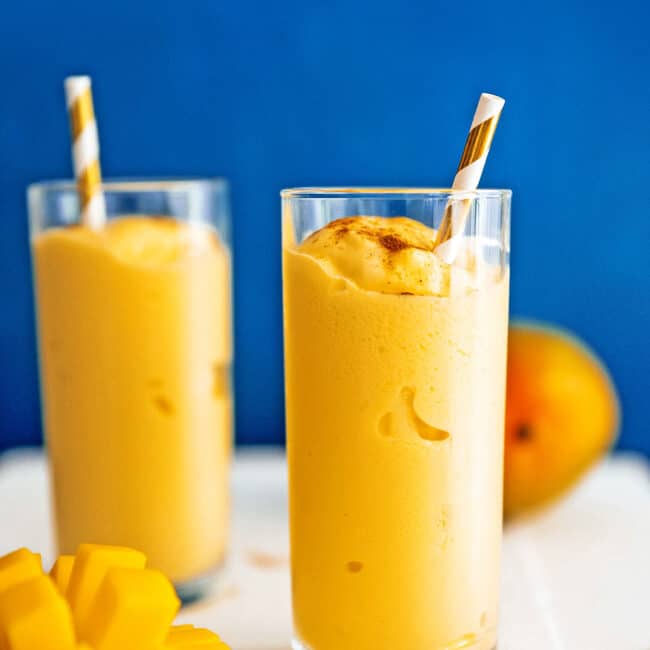
Joe johnson says
i love mangos <3